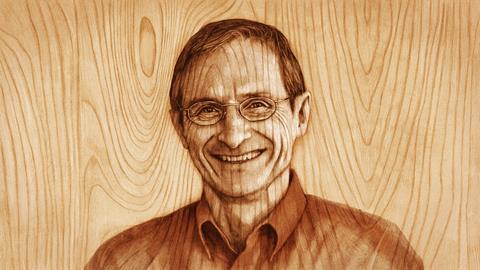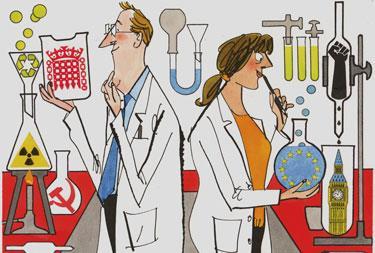The Nobel laureate discusses the art of woodwork and what it feels like to have a catalyst named after him
Richard Schrock is the F G Keyes Professor Emeritus at the Massachusetts Institute of Technology and the distinguished professor and George K Helmkamp Founder’s chair of chemistry at the University of California, Riverside, US. In 2005, he received the Nobel prize in chemistry for his work on alkene metathesis.
I don’t remember thinking too much about my career when I was 10 years old. As a kid growing up in Indiana, I played basketball, football, baseball. I’ve always liked to play basketball, that was one of my games because I was at one time, before I started to shrink, almost 6’4”. Nowadays, that’s a small basketball player but at the time it was a pretty good size. So I was always thinking about the next basketball game – or doing the next chemistry reaction!
I was exposed to chemistry when I was eight, through the proverbial chemistry set. I was given manuals on how to make things that might go bang. The process of changing one form of matter into another was fascinating to me. I guess I thought that I’d probably just continue to do that, because it’s fun.
About two or three years ago, I decided that I would get back in the lab, get back in the glove box and get some results. My group was concerned about me in many ways, because I was obviously too old to do chemistry. Maybe I would blow myself up or something. Maybe I would make a mess and dirty too much glassware. I can still do lab work, but I have other things consuming my time so it’s not a very efficient way to go. That summer I really grew to appreciate how slow chemistry can be on a day-to-day basis. In the end, not much came out of my experiments, frankly.
I don’t mind having a catalyst named after me. It’s okay. I usually don’t call it the Schrock catalyst, because it’s not mine, it’s nature’s. There are hundreds of catalysts because for reactions in organic chemistry there’s no magic bullet, there’s no single catalyst. Quite the opposite. You really have to tailor the catalyst to whatever you want the result to be.
There’s no such thing as an alternative fact to a phenomenon
I think a lot of research today is, for understandable reasons, done with top-down support. People who get the money are at the mercy of the people who provide the money to them, namely governments, government agencies and so on. They then have to do the things that they’ve used to convince the government to give them money. But if you don’t want to do that type of research, if you had a freer hand to do research, you could make discoveries like I made in 1974 at DuPont. I had a very free hand for three years to do something interesting. I think there’s almost no funding today for that type of research.
At the end of the second world war science was really reaching its peak. The respect and support for science was relatively high. Goals for science were quite obvious. In my view, it’s eroded since that time. Now, sadly, maybe half the people you run into would say: ‘Oh, I don’t believe in evolution. I don’t want to get my children vaccinated.’ It’s amazing that people, in spite of being presented with the facts, still don’t believe that others who actually know a lot about the subject are not giving you fake news. There’s no such thing as an alternative fact to a phenomenon. It’s disappointing that things today seem to be going in that direction. It’s hard for somebody like me to swallow.
I do woodworking, primarily if I need to. We bought a house in Riverside close to the campus, about a mile away so I can walk to work and back. It’s a single floor house, made for people like me and my wife who are getting older and want to avoid stairs. It’s small, it’s manageable. But it didn’t have any furniture. It’s also a house built in 1976. For my house in Massachusetts, which is a turn-of-the-century house, I built a specific style of furniture. We didn’t want to bring all of it to California and it wouldn’t look right anyway. I wanted to make furniture in a mid-century-modern style, so I made tables, chairs and stools, headboards.
I like the art in woodworking. My father was a carpenter, so there was some exposure to it when I was young. I learned a lot, and I guess it just caught on. In high school, I made something to house all my stereo equipment and it just grew from there. It’s great to make things that you can actually use. That goes for my chemistry too. I also want to make things that are really going to change the way chemistry is done. I mean, making molecules and making chairs – 1030 difference in size, but they’re both building, constructing, testing.
Every year, the president of MIT stands and congratulates everyone at the graduation ceremonies. When somebody who had graduated from MIT met the former MIT president many years later, he said: ‘You gave me very good advice.’ And the former president said: ‘What was that?’ ‘When I was in line, you gave me the degree certificate and shook my hand, and said: “Keep moving. Keep moving.”’ Apart from being a funny joke, being willing to change, being persistent, being observant, keeping your eyes open and keeping the faith in what you do – this is good advice. Never give up. Sounds a little trite, but that’s basically it.













No comments yet